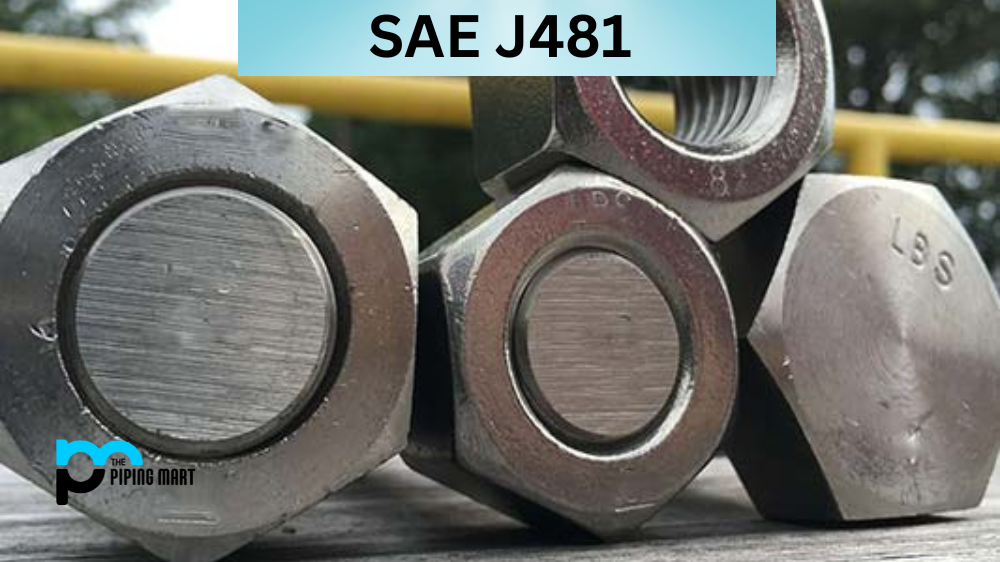Metals have been an essential part of human civilization, with numerous uses, from construction and transportation to defence and industrial manufacturing. As technology advances, so do the demands for high-performance materials that can withstand extreme conditions. One such material is AMS 5779, a premium-grade stainless steel alloy known for its exceptional strength, durability, and resistance to corrosion. This blog will explore AMS 5779’s composition, physical and mechanical properties, and typical applications.
What is AMS 5779?
AMS 5779 (also known as Inconel X-750) might sound like a secret code, but it’s a specification document for a type of steel commonly used in aerospace engineering. When engineers need to design parts for planes or spacecraft that can withstand extreme temperatures and pressure, they turn to AMS 5779 for guidance on what type of steel to use. It’s like a recipe book for steel that ensures consistent quality and performance.
What Form is AMS 5779 Available at Piping Mart?
- Bar
- Nuts
- Bolts
- Washers
- Screws
- Fasteners
- Stud Bolts
- Sheet Plates
AMS 5779 Composition
AMS 5779 is a precipitation-hardening stainless steel containing highly alloyed materials, including chromium, nickel, and molybdenum. This material’s chemical composition is carefully controlled to balance formability, machinability, and high-temperature performance. Typically, AMS 5779 contains 15-17% chromium, 8-10% nickel, 2.5-3.25% molybdenum, 3-4.5% copper, and small amounts of other elements.
| Element | Min % | Max % |
|---|---|---|
| C | – | 0.08 |
| Mn | – | 1.00 |
| Si | – | 0.50 |
| S | – | 0.01 |
| Cr | 14.00 | 17.00 |
| Ni | 70.00 | – |
| Nb/Cb | 0.70 | 1.20 |
| Ti | 2.25 | 2.75 |
| Al | 0.40 | 1.00 |
| Fe | 5.00 | 9.00 |
| Co | – | 1.00 |
| Ta | – | 0.05 |
| Cu | – | 0.50 |
AMS 5779 Physical properties
Regarding physical properties, AMS 5779 has a density of 7.76 g/cm³ and a melting point of 1410-1450℃ (2570-2640℉). It also has excellent resistance to oxidation and corrosion in various environments, such as seawater, acids, and high-temperature gases. Thanks to its unique precipitation-hardening mechanism, AMS 5779 can achieve high strength and toughness levels while maintaining good ductility and impact resistance.
| Density (lb / cu. in.) | 0.298 | |||
| Specific Gravity | 8.25 | |||
| Specific Heat (Btu/lb/Deg F – [32-212 Deg F]) | 0.103 | |||
| Electrical Resistivity (microhm-cm (at 68 Deg F)) | 731 | |||
| Melting Point (Deg F) | 2575 | |||
| Thermal Conductivity | 83 | |||
| Mean Coeff Thermal Expansion | 7 | |||
| Magnetic Permeability | 1 | |||
| Modulus of Elasticity Tension | 31 | |||
| Reduction of Area | 42 | |||
AMS 5779 Mechanical properties
Mechanically, AMS 5779 exhibits significant fatigue and creep resistance, making it ideal for use in aerospace, power generation, and other demanding applications. Its tensile strength can reach 200 ksi (1380 MPa) and yield strength up to 170 ksi (1170 MPa) in the aged condition. The material’s combination of hardness and toughness is also notable, with a Rockwell hardness (C scale) of 40-43 and an elongation of up to 20%.
AMS 5779 Uses
AMS 5779 finds its use in various applications due to its unique properties. Some common uses of AMS 5779 include manufacturing gears, aircraft components, thermal spray nozzles, turbine blades, and other parts that require high strength, corrosion resistance, and thermal stability. This material also is a reliable alternative to cobalt-based alloys, considered one of the most effective materials for high-temperature aerospace applications.
AMS 5779 Hardness
The Hardness of AMS 5779 is one of the most notable attributes. AMS 5779 increases hardness by precipitation of copper, nickel, and molybdenum in an austenitic matrix. This process is known as precipitation hardening. Precipitation hardening produces a stronger final component, better able to withstand high-stress applications.
AMS 5779 Heat treatment
To enhance the mechanical properties of AMS 5779, heat treatment is necessary. The recommended process heating temperature should be around 1045℃ (1913℉), followed by water quenching. After that, the ageing process will be performed within the recommended range for several hours. The range is usually in the field of 510-620℃ (950-1150℉) for 4-16 hours. The heat treatment ensures the material achieves its maximum strength and corrosion resistance capabilities.
Conclusion:
In conclusion, AMS 5779 material offers exceptional strength, toughness, and corrosion resistance properties, making it a preferred material for high-performance applications. Its ability to withstand extreme environments, fatigue, and creep make it an ideal candidate for manufacturing various aerospace components, gears, and other parts. When heat-treated correctly, it achieves its maximum potential hardness and strength without compromising flexibility. Whether you’re a manufacturer, engineer, or customer, understanding this material’s properties can improve the final product’s performance and reliability.

Abhishek is a seasoned blogger and industry expert, sharing his insights and knowledge on various topics. With his research, Abhishek offers valuable insights and tips for professionals and enthusiasts. Follow him for expert advice on the latest trends and developments in the metal industry.




